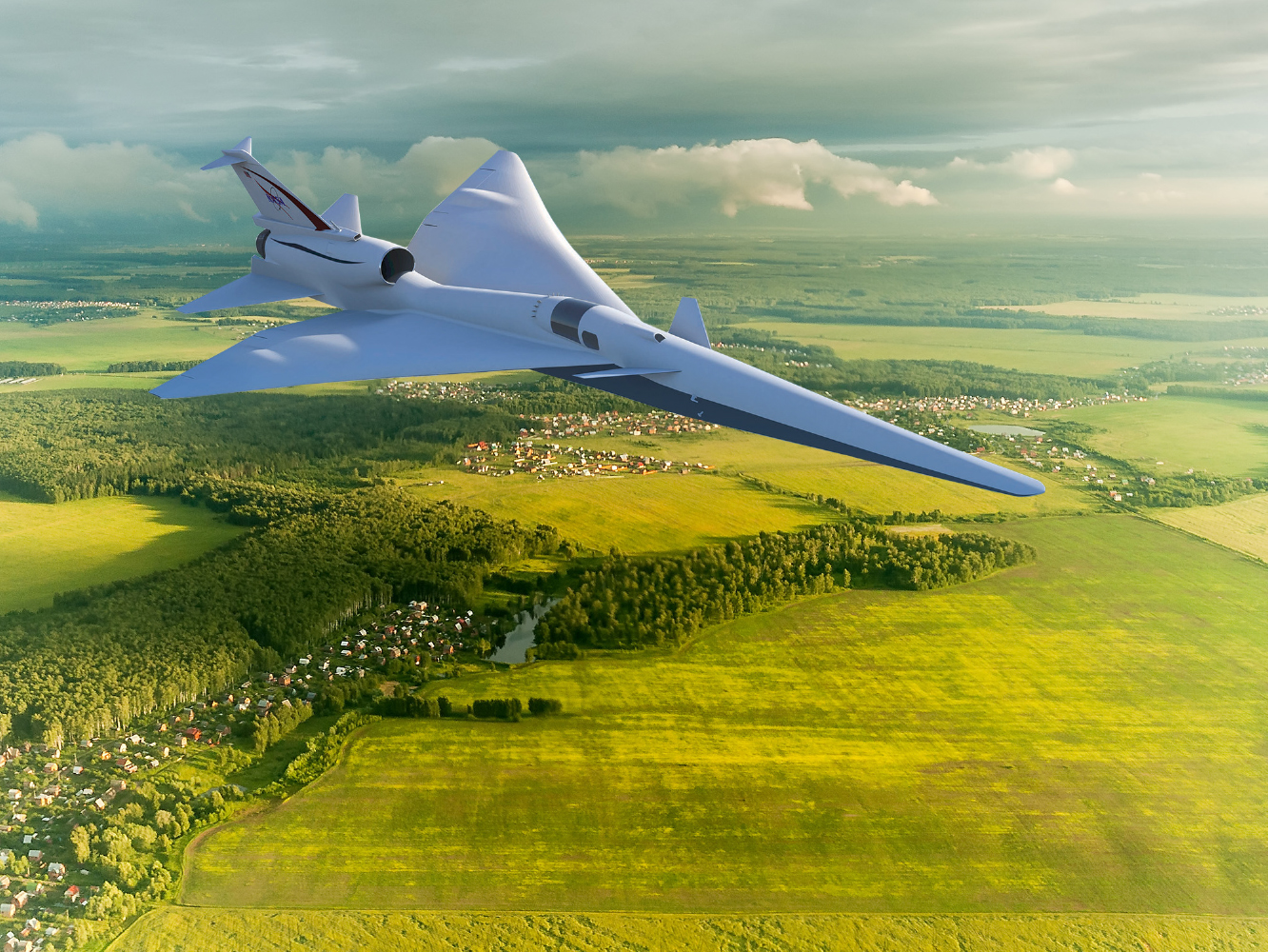Production of NASA's new X-59 supersonic jet continues amid coronavirus outbreak
"Lockheed Martin is continuing with X-59 production operations."

Production on NASA's new X-59 supersonic X-plane despite closures and delays in the space industry caused by the spread of COVID-19, the disease caused by the novel coronavirus SARS-CoV-2.
In a March 20 statement, NASA officials said that "in California, work continues by Lockheed Martin on X-59, NASA's first large-scale, piloted X-plane in more than 30 years, while NASA oversight and inspections will be conducted almost exclusively virtually."
"Lockheed Martin is continuing with X-59 production operations, and the only on-site NASA presence is a Quality Assurance representative when needed for the GMIPs (Government Mandatory Inspection Points)," said Craig Nickol, NASA's Low Boom Flight Demonstrator project manager, in a statement provided to Space.com.
Video: Watch NASA and Lockheed start building the X-59 supersonic jet!
Related: Trump's 2021 NASA budget request supports X-59 jet
Final assembly for the supersonic plane, which was officially named X-59 QueSST in 2018, was greenlit during a critical design review in 2019. The plane is designed to travel over land faster than the speed of sound. But, unlike earlier supersonic planes, its main draw is that it will supposedly create an ultraquiet sonic boom, making it much less of a disturbance to the general public.
As a Lockheed Martin representative told Space.com in February, "We're very confident. All kinds of modeling simulations and predictions align, so we believe, based on these models and simulations we've run, that it will achieve that low-boom sound once it reaches supersonic speeds."
The supersonic X-59 QueSST is not the only new X-plane NASA is continuing work on amid the coronavirus pandemic. The agency is also making advances on its new X-57 all-electric plane, NASA spokesperson Sasha Ellis of the Langley Research Center said via email.
Get the Space.com Newsletter
Breaking space news, the latest updates on rocket launches, skywatching events and more!
The supersonic X-59 QueSST is not the only new X-plane NASA is continuing work on amid the coronavirus pandemic. The agency is also making advances on its new X-57 all-electric plane, NASA spokesperson Sasha Ellis of the Langley Research Center said via email.
Discussing further how work is progressing amid coronavirus, the spokesperson recently told Space.com that "work is also continuing on NASA's X-57, the agency's first all-electric X-plane."
"The team is maintaining communication and getting parts in place for functional tests, taxi tests, and eventually flight tests," Matt Kamlet, NASA's X-57 public affairs specialist at the Armstrong Flight Research Center in California, said in the statement.
- Why a Fighter Jet Is Testing 'Quiet' Supersonic Booms Over Texas for NASA
- NASA Rocket Launch Tests Supersonic Parachute for Mars Rover Landings
- Countdown: The World's Fastest Vehicles
Follow Chelsea Gohd on Twitter @chelsea_gohd. Follow us on Twitter @Spacedotcom and on Facebook.
OFFER: Save at least 56% with our latest magazine deal!
All About Space magazine takes you on an awe-inspiring journey through our solar system and beyond, from the amazing technology and spacecraft that enables humanity to venture into orbit, to the complexities of space science.
Join our Space Forums to keep talking space on the latest missions, night sky and more! And if you have a news tip, correction or comment, let us know at: community@space.com.

Chelsea “Foxanne” Gohd joined Space.com in 2018 and is now a Senior Writer, writing about everything from climate change to planetary science and human spaceflight in both articles and on-camera in videos. With a degree in Public Health and biological sciences, Chelsea has written and worked for institutions including the American Museum of Natural History, Scientific American, Discover Magazine Blog, Astronomy Magazine and Live Science. When not writing, editing or filming something space-y, Chelsea "Foxanne" Gohd is writing music and performing as Foxanne, even launching a song to space in 2021 with Inspiration4. You can follow her on Twitter @chelsea_gohd and @foxannemusic.
-
Redacted No word yet on how this is ethical or in compliance with the California stay at home order. Lockheed Martin's other operations get Defense Industrial Base classification as essential. This ain't that.Reply -
Lord Hung ReplyRedacted said:No word yet on how this is ethical or in compliance with the California stay at home order. Lockheed Martin's other operations get Defense Industrial Base classification as essential. This ain't that.
It is permitted under The Transportation Systems Sector in aviation. -
Redacted Reply
Respectfully, I have to disagree. It's a stretch to include the production line of a single demonstrator aircraft for a commercial technology that is probably decades away from implementation.Lord Hung said:It is permitted under The Transportation Systems Sector in aviation.
Below is the description of the Aviation subsector, I personally can't see fitting this into anything mentioned:
Aviation includes aircraft, air traffic control systems, and about 19,700 airports, heliports, and landing strips. Approximately 500 provide commercial aviation services at civil and joint-use military airports, heliports, and sea plane bases. In addition, the aviation mode includes commercial and recreational aircraft (manned and unmanned) and a wide-variety of support services, such as aircraft repair stations, fueling facilities, navigation aids, and flight schools.Rightfully so, this pertains to keeping the existing planes and support services functional.
Let me be a little more clear about my view, basically Lockheed has chosen to waive themselves of any ethical responsibility or direct impact to their bottom line during this crisis, even though they are one of the corporations that could most afford to lead by example. It's telling that NASA is cutting back their in-person effort to protect their people, but sorry Lockheed people, you have to stay on the line so the product can be a few weeks less late.










